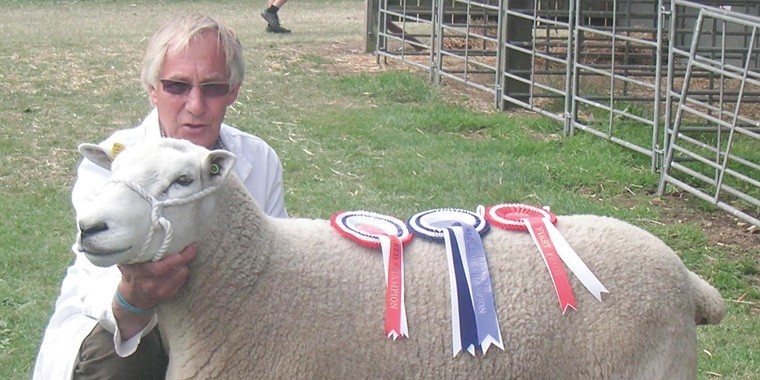My last article, written on 16 March, concluded with: “I just hope that once this weekend is out of the way, we will truly see the beginning of spring.”
Talk about a false dawn – and we have seen several since – but now, exactly one month later, I would say we are truly seeing the start of spring. For sheep producers across the country, this year has been extraordinary. For some it has been desperate, with lambs on the ground, tightening fodder supplies, horribly wet weather and exceptionally slow grass growth. March grass growth in terms of kilograms of dry matter per hectare per day was less than a third of last year’s. Many producers have struggled, and many have been compelled to buy additional, expensive food resources simply to keep ewes going, undoubtedly making a significant dent in this year’s margin.
I have never fed ewes so late into the season, but failure to do so would unquestionably have resulted in a rapid loss of body condition at that critical time, post lambing, when their reproductive system is recovering. Cost cutting at such a time would almost certainly have a negative impact on next year’s lambing performance.
On the plus side, the sheep trade has been very strong, with almost unprecedented hogget prices (or do we call them lambs now that supply is tight?), but even this has its down side. It is good to see hoggets selling at close to, or at, £3 a kilogram liveweight, but this is beginning to erode demand. I was speaking to a local butcher last week who said that, at this time of the year, he would normally have half a dozen lambs in his cold store. But he only had two, simply because they were becoming increasingly difficult to shift at the price he was having to charge. This season has highlighted to some just how fragile their sheep enterprise is and I know of some, albeit smaller producers, who are seriously considering exiting the sector.
The welcome rise in sheep prices this season is a good illustration of the vagaries of the global market. A significant part of the increase has arisen as a result of New Zealand producers selling a lot more of their lambs into the Chinese (25%+ increase) and North American markets, tightening supplies for the European markets and increasing our export demand to Europe.
In this situation, we have been the beneficiaries, but we shouldn’t forget how potentially volatile the global market is and that the situation could just as easily veer the other way. Any windfall coming our way now should be reinvested into making our sheep production systems more efficient and into developing a higher level of resilience, should the latter situation arise.
One factor that may well precipitate the exit of some sheep keepers, particularly those on urban fringes, is the continued and seemingly rising threat of sheep worrying by dogs. Allowing your dog to worry livestock is an offence, but seemingly an offence that is increasingly committed without any fear of meaningful sanctions. I do appreciate that police resources are stretched, particularly in rural areas and that a few sheep being chased around and possibly injured or killed by a dog is quite a long way down the list of police priorities. But it is still an offence, an offence which lacks effective enforcement. As an industry we need to be reasonably sure that we can secure the safety of our sheep, but how do we go about it? There have been a number of campaigns targeted at raising public awareness of the problem, which seem to have had only limited success.
We also have the right to shoot a dog that is worrying our sheep, but this is an incredibly grey area, and has in the past resulted in flock owners being prosecuted for doing nothing more than protecting their own livestock. One deterrent that we have not yet seen, but I am sure it is only a matter of time, is the use of livestock protection dogs (LPD), a strategy employed in many other countries, generally as a deterrent to predators. But in a sheep worrying situation, as far as I am concerned, a dog becomes a predator.
In the French Alps, in recent years, sheep producers have increasingly resorted to the use of LPDs in response to a growing wolf population. Visit any tourist information center in the Alps and you will generally find leaflets providing information for walkers and mountain bikers on how to react to an encounter with an LPD with a flock of sheep. In many parts of North America, sheep flocks are protected by several layers of security with big, noisy, but generally less aggressive dogs (e.g. Pyrenees or Mareema) running within the flock and by larger more aggressive dogs, that will engage with predators, (e.g. Kangal or Anatolian Shepherd) patrolling the perimeter of the flock.
I am not suggesting that we resort to the latter, but this is an important debate that does need to be had. In particular, how would such moves sit in relation to both the Dangerous Dogs Act and the sort of reaction that would be generated by groups, such as the RSPCA, to a dog being reared and living with a flock of shee?
How would you react to a phone call from a little old lady (or gent) complaining “your big white dog just ate my Shit-Su, who only wanted to play with your sheep”?




